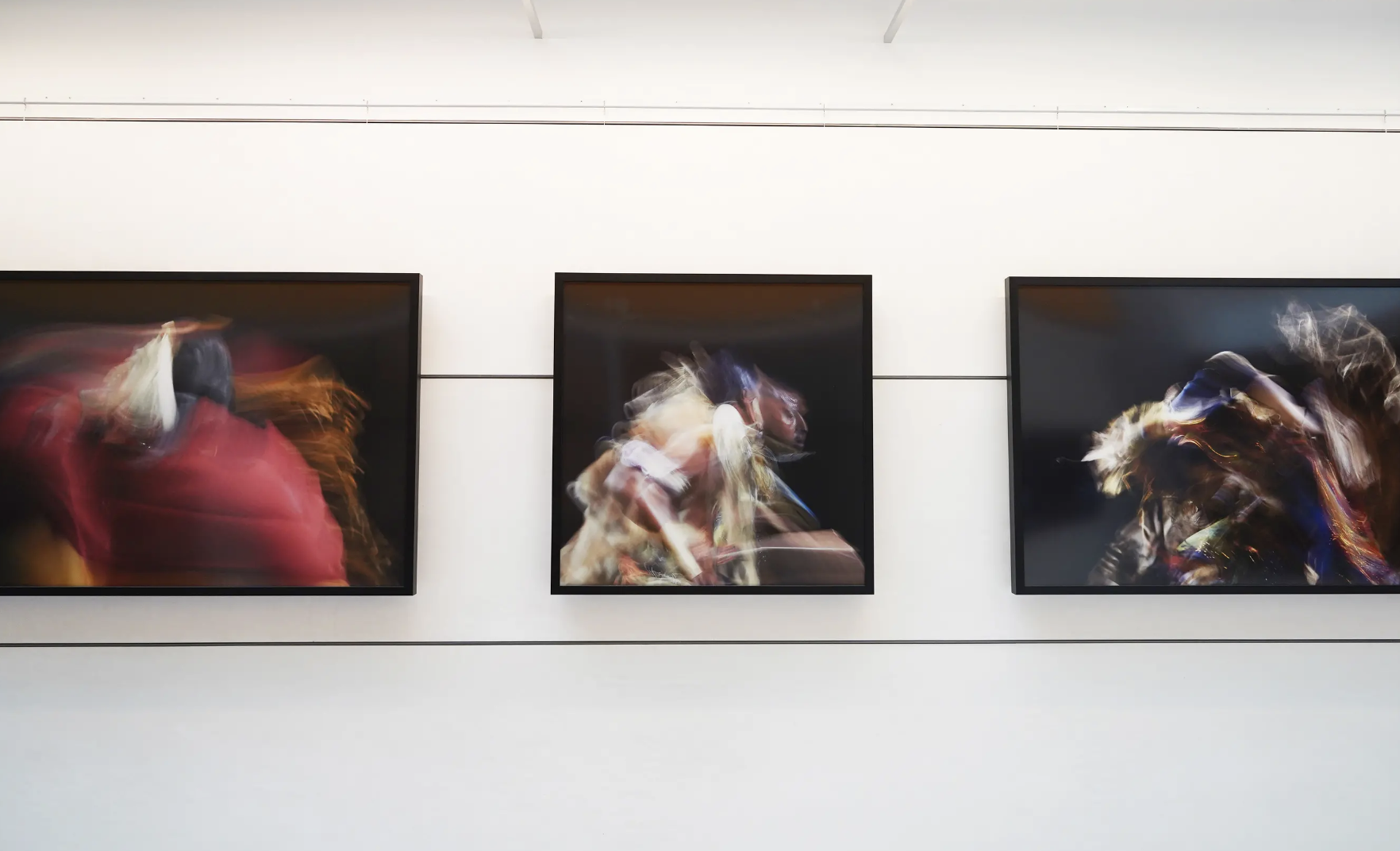
- Details
- By Dana Carroll for Yale School of Management
For Afro-Indigenous artist Kim Weston, art has always been essential to self-discovery. Growing up in New York City, she was exposed to art at a young age, visiting the Metropolitan Museum of Art and the Museum of Modern Art with her mom and learning about photography at Queens’ Jamaica Center for Arts and Learning.
After a near-death experience due to complications from a surgery, she developed a new appreciation for the intangible spirit that, even more than a physical body, makes humans capable of reflecting, building communities, and making art. This new outlook inspired her approach to photographing powwows, Native American celebrations that feature singing, dancing, food, and crafts. Weston captures these events using slow shutter speeds, creating dynamic photos that emphasize movement and spirituality.
The Artsy Fund, which brings diverse art to Edward P. Evans Hall, selected several of Weston’s photos to display in the building’s Beckenstein Atrium. Weston’s goal is to educate and inform people that Native Americans are not artifacts of the past but members of vibrant communities that strive to preserve traditional culture while adapting to modern life. “As Indigenous people, we’re constantly evolving like everyone else,” she told Heidi Brooks, a senior lecturer in organizational behavior, during a conversation on the podcast Learning Through Experience.
Sariah Park likewise discovered a passion for the arts early in life. At four years old, she learned to sew from her mother and grandmother. These lessons piqued her interest in fashion and eventually led her to study textiles and fashion at Parsons School of Design, where she is now a faculty member. Soon after graduating college, she sold her thesis collection of sportswear and handwoven designs to the department store Barneys, and she has since worked with retailers around the world.
As an enrolled citizen of the Chiricahua Apache Nation, Parks has leaned on her Indigenous identity to explore questions of consumerism, post-colonialism, and the environmental effects of waste. Her research currently focuses on decentering Whiteness and developing sustainable, land-based practices for producing textiles, fine art, and fashion. In her work featured on the fourth floor of Evans Hall, she uses upcycled deadstock (leftover fabric not used by clothing manufacturers) and damaged printed textiles to create art.
Established through the generosity of an anonymous donor, the Artsy Fund brings artworks that depict a diverse range of people and experiences to Evans Hall. A six-person committee helmed by Brooks selects and procures the art. The fund has selected work by the midcentury collage artist Romare Bearden for the student lounge and staged an exhibition of work by the Ghanaian-American textile artist Clara Nartey on the building’s second floor.
“Our mission of educating leaders for business and society inspires me to pay attention to the way people experience the micro-society that is Yale SOM,” Brooks said. “I'm delighted to have the chance to impact the way people experience Yale SOM and each other through art. I hope that the new works inspire and evoke rich thinking and conversation about the way we engage with each other and in the world.”
About Native American Heritage Month
Native American Heritage Month celebrates the rich and diverse cultures, traditions, and histories of Indigenous people in the United States and acknowledges their important contributions to this country. It’s also an opportunity to get educated about various tribes and the unique challenges Indigenous people have faced, both historically and in the present.
Yale University acknowledges that Indigenous peoples and nations, including Mohegan, Mashantucket Pequot, Eastern Pequot, Schaghticoke, Golden Hill Paugussett, Niantic, Quinnipiac, and other Algonquian-speaking peoples, have stewarded the lands and waterways of what is now the state of Connecticut for generations. We honor and respect the enduring relationship that exists between these peoples and nations and this land.
SOM’s Office of Inclusion and Diversity honored Native American heritage through a free book giveaway highlighting indigenous authors and stories. Later this month, SOM will host an Indigenous Art Reception to celebrate the work of Weston and Park.
OID hosts multiple cultural immersions throughout the academic year to encourage the SOM community to engage deeply with different cultures through sound, taste, touch, and thought in support of our mission to foster understanding, empathy, and inclusivity.
Help us defend tribal sovereignty.
At Native News Online, our mission is rooted in telling the stories that strengthen sovereignty and uplift Indigenous voices — not just at year’s end, but every single day.
Because of your generosity last year, we were able to keep our reporters on the ground in tribal communities, at national gatherings and in the halls of Congress — covering the issues that matter most to Indian Country: sovereignty, culture, education, health and economic opportunity.
That support sustained us through a tough year in 2025. Now, as we look to the year ahead, we need your help right now to ensure warrior journalism remains strong — reporting that defends tribal sovereignty, amplifies Native truth, and holds power accountable.
 The stakes couldn't be higher. Your support keeps Native voices heard, Native stories told and Native sovereignty defended.
The stakes couldn't be higher. Your support keeps Native voices heard, Native stories told and Native sovereignty defended.
Stand with Warrior Journalism today.
Levi Rickert (Potawatomi), Editor & Publisher

